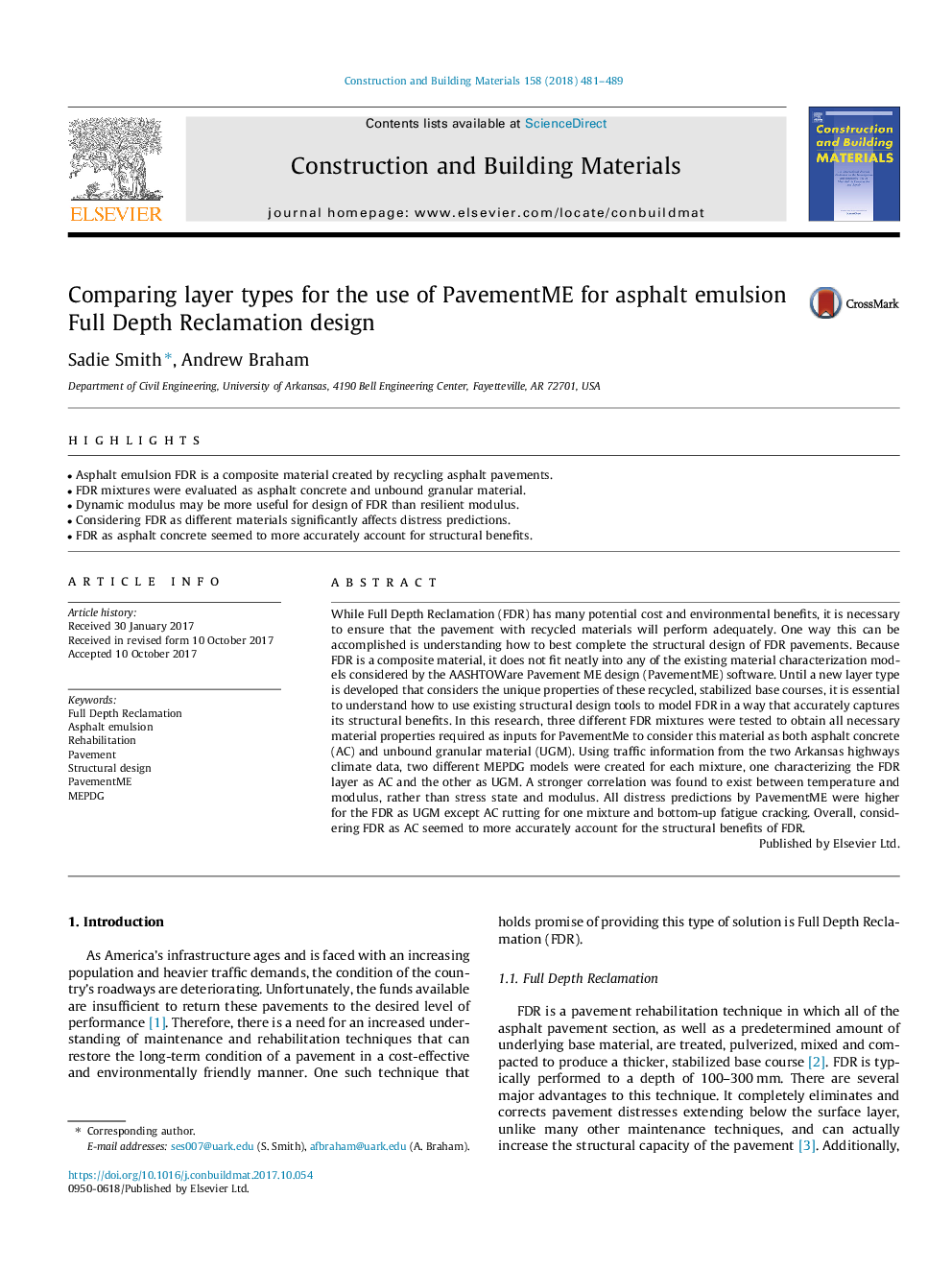| کد مقاله | کد نشریه | سال انتشار | مقاله انگلیسی | نسخه تمام متن |
|---|---|---|---|---|
| 4912619 | 1428748 | 2018 | 9 صفحه PDF | دانلود رایگان |

- Asphalt emulsion FDR is a composite material created by recycling asphalt pavements.
- FDR mixtures were evaluated as asphalt concrete and unbound granular material.
- Dynamic modulus may be more useful for design of FDR than resilient modulus.
- Considering FDR as different materials significantly affects distress predictions.
- FDR as asphalt concrete seemed to more accurately account for structural benefits.
While Full Depth Reclamation (FDR) has many potential cost and environmental benefits, it is necessary to ensure that the pavement with recycled materials will perform adequately. One way this can be accomplished is understanding how to best complete the structural design of FDR pavements. Because FDR is a composite material, it does not fit neatly into any of the existing material characterization models considered by the AASHTOWare Pavement ME design (PavementME) software. Until a new layer type is developed that considers the unique properties of these recycled, stabilized base courses, it is essential to understand how to use existing structural design tools to model FDR in a way that accurately captures its structural benefits. In this research, three different FDR mixtures were tested to obtain all necessary material properties required as inputs for PavementMe to consider this material as both asphalt concrete (AC) and unbound granular material (UGM). Using traffic information from the two Arkansas highways climate data, two different MEPDG models were created for each mixture, one characterizing the FDR layer as AC and the other as UGM. A stronger correlation was found to exist between temperature and modulus, rather than stress state and modulus. All distress predictions by PavementME were higher for the FDR as UGM except AC rutting for one mixture and bottom-up fatigue cracking. Overall, considering FDR as AC seemed to more accurately account for the structural benefits of FDR.
Journal: Construction and Building Materials - Volume 158, 15 January 2018, Pages 481-489